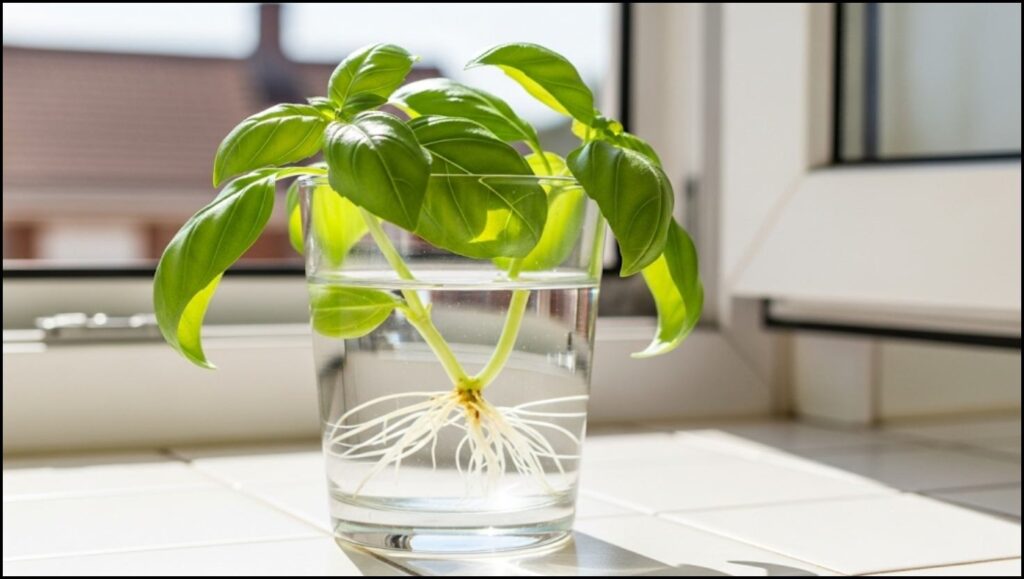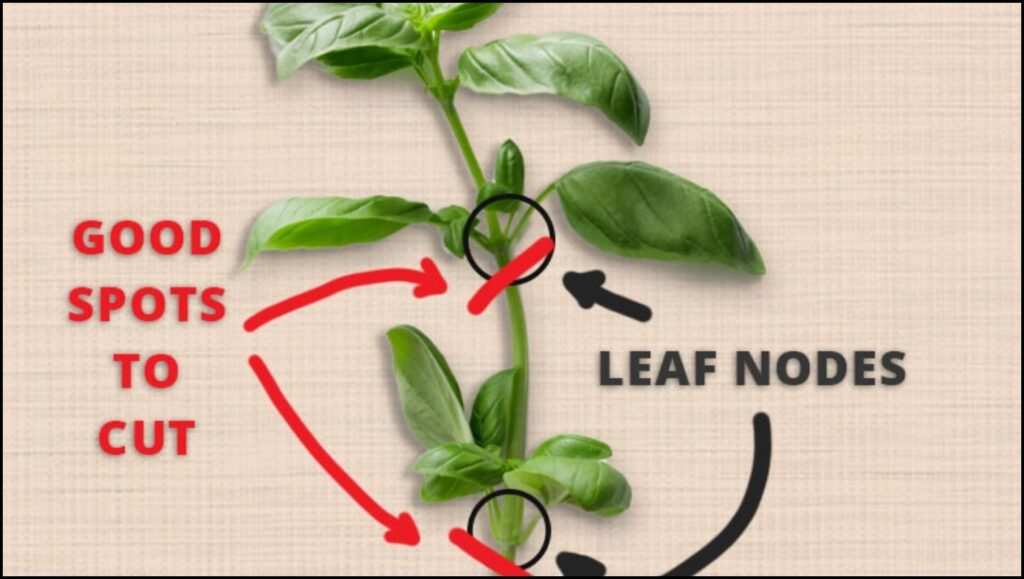
For home gardeners and chefs, securing a continuous harvest of fresh basil often ends at the grocery store or with a single, season-long plant. However, a simple horticultural technique allows enthusiasts to propagate basil from a single parent plant, creating a nearly endless, cost-effective supply. This method, rooted in basic botany, turns one plant into many using just a few simple tools.
Key Steps to Propagate Basil
| Key Step | Action Required | Expected Timeline |
| Select a Cutting | Choose a healthy, 4-inch stem that has not yet flowered. | Immediate |
| Prepare the Stem | Make a clean cut below a leaf node and remove the lower leaves. | Immediate |
| Root in Water | Submerge the stem’s node in a glass of water, changing the water every 2-3 days. | Roots appear in 1-4 weeks |
| Transplant to Soil | Once roots are 1-2 inches long, plant the cutting in potting mix. | 2-4 weeks after rooting |
The Science and Benefit of Stem Cuttings
Propagate basil herbs from cuttings, a form of asexual or vegetative reproduction, is a cornerstone of horticulture. Unlike growing from seed, this method creates a genetically identical clone of the parent plant. This ensures that desirable traits, such as the robust flavor of a Genovese basil or the purple hue of a Dark Opal basil, are perfectly preserved.
“When you take a cutting, you’re essentially creating a new, independent plant that has the exact same DNA as the one you took it from,” said Dr. Eleanor Vance, a botanist and author on sustainable agriculture. “This is far more efficient and faster than seed germination for many herb varieties.”
The primary benefit is economic and sustainable. A single basil plant purchased for a few dollars can be multiplied many times over, eliminating the need for repeat purchases. This practice reduces waste and provides a steady stream of fresh herbs free from pesticides that may be used in commercial agriculture.

Propagate Basil: A Step-by-Step Guide
While horticulturists use several techniques, the water method is the most accessible for home gardeners. Experts at the University of California Master Gardener Program confirm this method has a high success rate for soft-stemmed herbs like basil.
Taking Perfect Basil Cuttings
- Select a Healthy Stem: Choose a stem from a mature, vigorous basil plant. The ideal cutting is 4 to 6 inches long and has at least two sets of leaves at the top. Avoid stems that are flowering, as their energy is directed toward producing seeds rather than roots.
- Make a Clean Cut: Using sharp, sterile scissors or pruning shears, cut the stem at a 45-degree angle just below a leaf node (the bump where leaves grow from). This node is where new roots will emerge.
- Prepare the Cutting: Gently strip off the leaves from the bottom half of the stem. Any leaves left submerged in water will rot, which can contaminate the water and kill the cutting. Typically, leaving just the top two to four leaves is sufficient.
Rooting and Transplanting
Once prepared, the process of growing basil from cuttings is a matter of patience.
“The key to successful rooting is providing a stable environment with indirect light and clean water,” states a guide from the New York Botanical Garden. The organization recommends changing the water every few days to replenish oxygen and prevent bacterial growth.
Place the prepared cutting in a clear glass or jar filled with water, ensuring the stripped nodes are submerged. Position the jar in a location that receives bright, indirect sunlight, such as a windowsill that doesn’t get harsh afternoon sun.
Within one to four weeks, small white roots should begin to sprout from the submerged nodes. Once the roots are 1 to 2 inches long and appear robust, the cutting is ready for soil. Transplant the newly rooted cutting into a small pot filled with a quality potting mix. Water it thoroughly and keep the soil consistently moist for the first week to help it acclimate.
Common Pitfalls and Expert Solutions
Even with a straightforward process, new gardeners may encounter issues. The most common problem is rot, identifiable by a slimy, brown, or black stem. According to horticultural experts, this is almost always caused by leaving foliage below the waterline or failing to change the water frequently. Another issue is failed rooting, where a cutting simply wilts. This can be caused by taking a cutting from an unhealthy parent plant, placing it in direct, scorching sunlight, or allowing the water level to drop below the nodes.
“Patience is essential,” Dr. Vance advises. “Not every cutting will take, but with basil, the success rate is very high. If one fails, just try again. The parent plant will quickly grow new stems to replace the one you snipped.”
For those seeking an endless basil supply, experts recommend a staggered approach. By taking a few cuttings every few weeks, a gardener can have a continuous cycle of young plants ready to be harvested or transplanted to a larger garden, ensuring fresh basil is always on hand.
How to Propagate a Snake Plant: A Practical Guide to Expanding Your Collection
